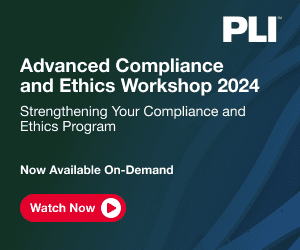An effort that began in 2010 under the Obama Administration — establishing web accessibility regulations for state and local governments under Title II of the ADA — has been renewed by the Biden DOJ. Kristina Launey and John W. Egan, partners at Seyfarth Shaw, dig into the history of this long-desired effort and what questions the regulations should address.
The DOJ has announced its intent to begin the rulemaking process to enact website accessibility regulations applicable to state and local governments under Title II of the Americans with Disabilities Act (ADA). This effort is a “long-term action,” with a notice of proposed rulemaking (NPRM) — essentially a draft regulation — scheduled to arrive in April 2023 and DOJ to receive public comment no later than June 2023.
According to the DOJ announcement, because “many websites from public entities (i.e., state and local governments) fail to incorporate or activate features that enable users with disabilities to access the public entity’s programs, activities, services or information online,” the DOJ intends “to amend its Title II ADA regulation to provide technical standards to assist public entities in complying with their existing obligations to make their websites accessible to individuals with disabilities.”
This is very big news for a few reasons.
First, web and app regulations under the ADA have been long desired by all interested parties — those with disabilities, their advocates, governmental entities and private businesses.
The most recent effort to do this, begun by the DOJ during the Obama Administration in 2010, drew on for years before it was unceremoniously withdrawn by the DOJ at the end of 2017, during the Trump Administration. Just a few months ago, in March 2022, the Biden DOJ issued guidance regarding website accessibility, in what many thought was the DOJ’s alternative to any regulatory effort. Apparently rather than being an alternative, it was a warmup for the main event.
Second, while the regulations would apply only to state and local governments subject to Title II, as in prior rulemaking efforts, regulations applicable to private businesses subject to Title III may well follow in similar form and substance. We, accordingly, encourage public accommodations to submit comments on this rulemaking, as this rule will have implications for them as well.
Some of the questions we believe the Title II regulations (and/or any subsequent Title III regulations applicable to private businesses) should answer include:
- At what point is a website or app considered accessible in compliance with the law and how is that measured?
- What is the safe harbor period for websites to be brought into compliance with a standard for website accessibility without fear of lawsuits?
- Will there be any special provisions for small covered entities to the extent compliance results in an undue burden or hardship?
- What will be the treatment of third-party content and/or crowdsourced material as it relates to compliance?
- Will the regulations permit alternative access or “equivalent facilitation” for complex content such as detailed charts and graphs?
Businesses that want to prepare for the coming changes should continue to take cues from case law, the DOJ’s recent guidance and the prior DOJ rulemaking effort. That is, look to the Web Content Accessibility Guidelines 2.1 Level AA toward making and maintaining web content and apps that are accessible to individuals with disabilities.



 Kristina M. Launey
Kristina M. Launey John W. Egan
John W. Egan








